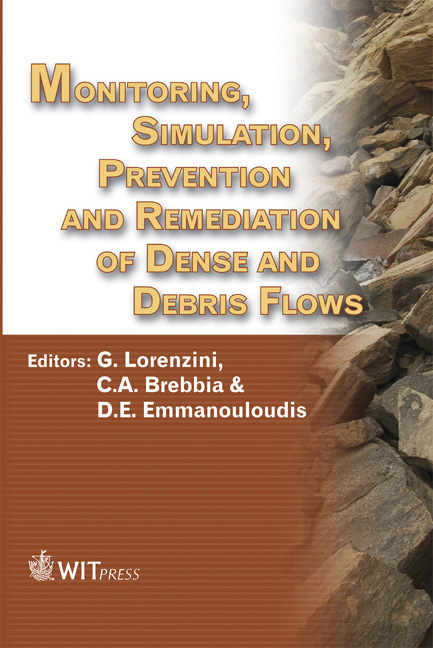Operative Approaches For Debris Flow Modelling And Hazard Assessment, Laures Watershed, Valle D’Aosta, Italy
Price
Free (open access)
Transaction
Volume
90
Pages
9
Published
2006
Size
2,476 kb
Paper DOI
10.2495/DEB060171
Copyright
WIT Press
Author(s)
M. Segato, L. Mao, M. Coccato, M. A. Lenzi & V. D’Agostino
Abstract
Here is presented a comparative application of different simple methods for preliminary hazard mapping in debris flow prone areas. The analysis is carried out in the Laures fan, a 17.2 km 2 basin in the Western Italian Alps. The applied methods support increasing complexities, starting from the use of a simplified hydraulic approach for the identification of the critical cross-sections and the overflow volume to the use of a 2-D model that provides a hazard map from the overlay of maximum flow thickness and velocity maps. If integrated with a deep knowledge of the fan area, the first approach allows a reasonable preliminary debris flow hazard mapping. The use of a 2-D hydrodynamic model is recommended if inhabited area or important communications are located in the fan, thus a more accurate hazard mapping is required. Keywords: alps, debris flow, hazard mapping, 2-D model. 1 Introduction Debris flows are one of the most hazardous natural phenomena in the European Alps. Debris flows frequently reaches the mountains alluvial fans, where commonly houses, infrastructures, and crops are located, and where the channel slope becomes milder thus allowing debris deposition and causing backwater effects and upstream flooding. Even if these events regularly cause loss of life, and disruption of livelihood and communications, in Europe there are still no uniform approach and available quantitative techniques for limit this hazard.
Keywords
alps, debris flow, hazard mapping, 2-D model.





